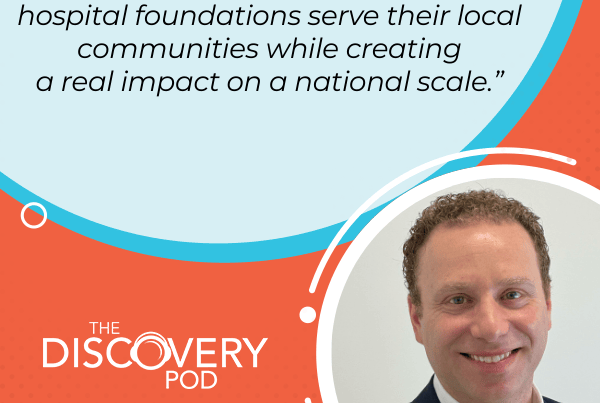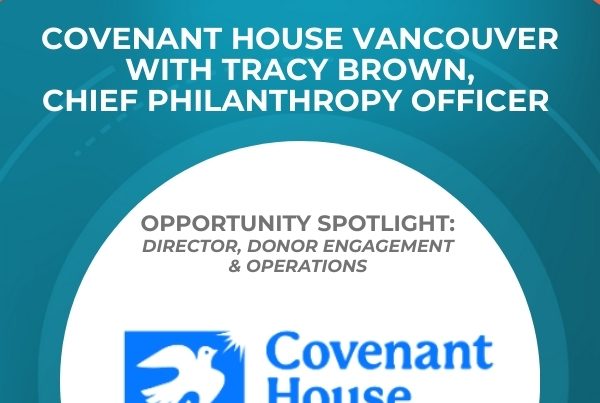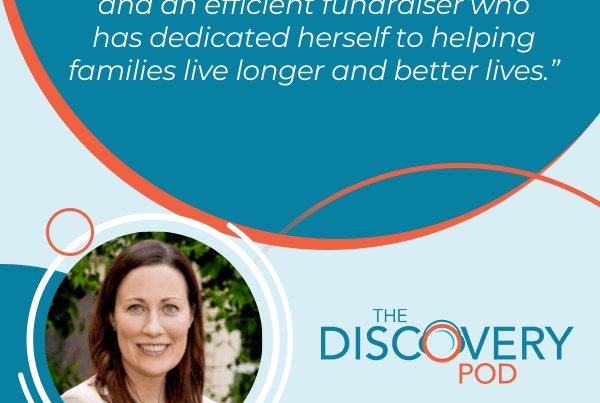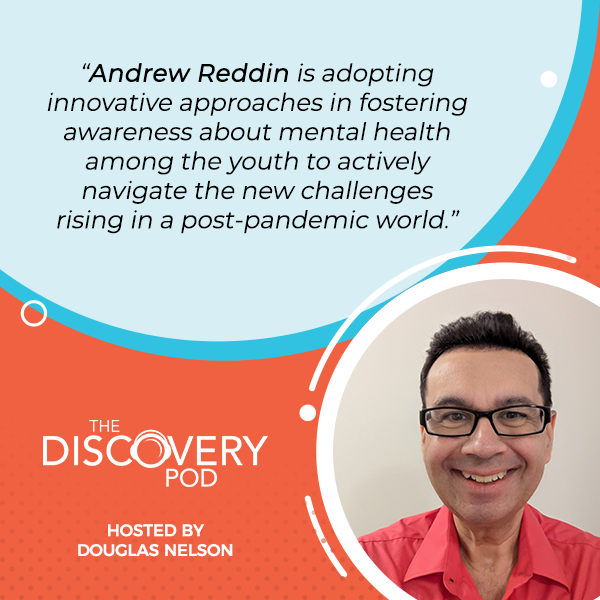
The Child Development Institute is making waves in youth mental health and early intervention today, addressing complex challenges many children and their families are struggling with in a post-pandemic world. Douglas Nelson speaks with their CEO Andrew Reddin about their innovative programs that equip young people with essential skills to improve their mental health care. Together, they delve into the post-pandemic surge of mental health needs, the importance of upstream investments, and how collaborative approaches shape better futures for various communities. Tune in as this inspiring conversation highlights the critical role of data-driven solutions and bold leadership in driving meaningful change.
—
Listen to the podcast here
Child Development Institute With Andrew Reddin, CEO
A Multi-Service Approach To Supporting Children
My guest is Andrew Reddin. Andrew is the CEO of the Child Development Institute, a Canadian charity committed to improving the early learning and mental health outcomes of nearly 50,000 children and youth by 2029. In our conversation, Andrew talks about what it’s like to come from a startup organization in his previous role to being the CEO of more than a 100-year-old organization with well-established practices and programs, how he approached the changes that need to happen in the post-COVID environment to support child and youth mental health, how he brings his team along, how did he bring his board along, and how he ensures the necessary investments in the infrastructure to make it all run.
Andrew is a curious thoughtful leader with a deep confidence about the quality of the work and the impact that he and his colleagues are having through the Child Development Institute. If your organization is going through change or contemplating a change or is a new leader, you are looking for a pathway of someone who walked that mile before you. You are going to enjoy our conversation with Andrew Reddin.
—
Welcome to the show, Andrew.
Thank you, Doug. It’s great to be here. Thank you for having me.
Andrew, we are going to have a great conversation starting with a conversation about the Child Development Institute there in Toronto, Ontario, and the great work that you and your colleagues are doing. Tell us a little bit about the institute how long you’ve been CEO and what’s happening.
I have been at the helm of the Child Development Institute or CDI for nearly two years now. I’m still relatively new in the seat, but am feeling fairly settled in. CDI is a unique organization in that we are multi-service. We bring together expertise and service in early years and childcare, clinical services, and programs that address gender-based violence to support the child.
Our work from these different but connected vantage points involves creating and fostering safer homes, schools, and communities, and we are 116 here now doing just that. We were founded in 1909 and the entity has evolved through various mergers and growth in the scope and focus of our programs. It’s a real privilege to work with this team, a team from which I continue to learn from and be inspired. We have such different yet interconnected areas of expertise as part of CDI that allow us to provide a robust holistic service loop to the youth and families whom we support.
At CDI, we have direct services, as in Toronto. We have multiple service centers and twelve care centers, and we also have work to scale some of the evidence-based programs that we designed. For example, one of our signatures is SNAP, which stands for Stock Now And Plan. It is a cognitive behavioral program for children ages 6 to 11, who have been assessed as most at risk of becoming violent offenders due to very early challenges with dysregulation, lack of self-control, and aggressive behaviors.
We work to develop a model that helps children gain self-control of social skills and problem-solving skills to help them stay in school and out of the criminal justice system. Through the outcomes we have achieved through SNAP that we have worked with partners to evaluate, we have, we have been able to scale the model across Canada and internationally. We have trained and equipped more than 100 affiliate organizations to deliver SNAP in their communities.
That’s helped broaden the reach of CDI in partnership with many great organizations, both nationally and internationally. We do believe in the “It takes a village” approach to support children, youth, and families, especially in this day and age where there’s so much complexity in terms of the needs in our communities, especially post-pandemic. That in a nutshell is CDI and what we are all about.
Increased Need For Post-Pandemic Mental Health Support
You mentioned what’s needed post-pandemic. One of the figures about the Child Development Institute that jumped out at me was the fact that you’ve tripled the number of individuals that you are serving since 2021. That’s a growth rate that’s staggering even in the face of the broad social understanding that mental health is a challenge for youth, post-pandemic. From your perspective, how much of this is revealing what was already there how much of this is through greater awareness and how much of this is new actual challenges to mental health that maybe weren’t even in existence several years ago?
I would say while awareness is always been moving, it probably is predominantly the latter. There is a real anticipation of the challenge. Historically, there has been an underreporting or an underrecognition of the extent of mental health challenges, particularly affecting families. That’s largely due to the stigma around mental health and the challenges that families have had, first, to acknowledge that their child may need support and then to attempt to access that support in what has often been a fairly fragmented system.
I would say though that pre-pandemic, we were already making some encouraging progress around that. There were some terrific organizations of their like Jack.org. Many of us in the field will work to design mental health care. Not that there isn’t any more to do on that, but I can be cautiously optimistic and say that we have made some good headway there.
To your point, it has been the identification for me post-pandemic. For example, in our childcare center, our staff are reporting seeing about a 35% to 40% interval, and the proportion of our youngest children, toddlers, and preschoolers coming to our centers with the stigma that they get behavioral challenges and emotional distress. Even if the family hasn’t always identified it themselves or have the language to articulate it, our early childhood educators are seeing it.
What we understand and what we are hearing from families as well as experts in our field is that the sheer cognitive stress and isolation brought about by the pandemic are still having ripple effects. Caregivers were grappling with and continue to grapple with things like the housing crisis, food insecurity, and precarious employment that in many ways was exacerbated by the pandemic. Unfortunately, their children have absorbed that like such.
The compound stress and isolation brought about by the pandemic are still having ripple effects today. Share on XThat’s largely the impact that we are seeing. There was a hope that perhaps as we move further out from the COVID years, we see the healing from the other way or these phenomena moderated a bit, but we haven’t yet. Children born in 2020 are entering school now, and unfortunately, many of them are going into the school system when mental health never being on school. I would say that the work has even more agenda.
Adapting To Complex Post-Pandemic Challenges
My colleagues and I have had the chance to work with a number of child development centers in British Columbia and across the country. One of the things that was staggering for me was the realization that it isn’t more of the same conditions or a higher volume of the same types of issues that organizations were serving prior to the pandemic, but there is such a greater complexity to the services required to support children following the pandemic. As a leader of the organization, how do you manage to adapt to that greater complexity in terms of the services you offer and the professionals that you have on your team to support those kids and their families?
There are employees that we have been talking about in terms of trying to harness all the expertise within the organization to strategize together around what are the most impactful solutions going forward. My other sector as CEO of CDI, Lynn Ryan-Mackenzie, developed an innovative internal decision-making framework around this. He launched a science in action, which I’m proud to help carry forward. It is an interdisciplinary table within the agency where our childcare, clinical, and research leads come together and look at the suite of programs and services that CDI offers.
We look at that in relation to the need that we are seeing in the community and as you say, the specific intersecting challenges, the heightened degrees of velocity, the ways that those pieces intersect, and then we look at the maturity of each of our services in terms of how robust are the outcomes? Are those outcomes relevant to the needs that we are seeing?
Based on that analysis, we decide what programs we need to scale up that we need to further invest in, and also what programs we need to take back to the drawing board. Maybe even a program that was a bread-and-butter program for CDI over the years is not as modeled when confronted with that greater complexity.
In terms of what that greater complexity looks like, we are seeing a lot of children come to us with anxiety, and that’s often coupled with other challenges that anxiety and trauma, especially children and youth from equity-preserving communities who face additional layers of systemic discrimination and other serious and risk factors. That action mechanism is helping us pivot our resources and our programming, where the evidence tells us what will have the greatest impact. One great example of that is something brand new that we still have to pilot.
A New Initiative To Support Children’s Mental Health
Are you saying we are breaking news here on the show? Your big reveal. We don’t have a drum roll but tell us.
This is my colleague Darlene Landry’s vision. She’s the director of our early years at childcare services. It’s gaining a lot of excitement within the organization. We are seeking some potential funders for this, both in terms of government and foundations. We are tentatively naming this initiative Creating Healthy Futures. It circles back to what I shared about the level of need that we are seeing in our childcare centers.
Given that our early childhood educators are reporting, the heightened need and complexity among our youngest children around behavioral and mental health challenges, that inspired Darlene to reach out to our clinical colleagues and say, “Let’s join forces here. How can we equip our early childhood educators with more pragmatic and media tools and techniques to help our youngest children feel safe and secure, attach to a safe adult, become more aware of their feelings, and feel stay and be supported in the center and then at home?”
It’s caregivers with some fundamental morals that they can share with their children and help with their own as well. We are excited to develop this. We have been in touch with a meaningful secondary institution around helping design the curriculum that we would utilize to equip our needs with these mental health-focused tools and techniques.
It’s not only around piloting a service offering in our childcare centers. Hopefully, if it’s effective we can even scale beyond CDI centers, and also develop a credential for the early childhood education profession in infant and early years in mental health. We are excited to think through this and other opportunities to look at how can we make the most of the resources we have to support as many kids as we can and the most meaningful.
One of the things I like about that is that there’s the practical tactical need to provide better service or the desire to provide better service to those kids in the childcare centers, but also the system change of working with an academic partner, developing that credential so that impact, that benefit can be shared well beyond your region, beyond the country potentially.
What we are excited about too is that system change and also as a way to invest in our childcare workforce. Early childhood educators need and deserve to be valued more for their incredible contribution to early childhood development. Some of the potential funders we have been speaking with also see how an investment like this could support professional growth and development, embed all that we need, and perhaps help retain more of those talented and dedicated folks within that field. There’s also potential for this hopefully to be a way to nurture and grow the BEC workforce.

Child Development: Early childhood educators truly deserve to be valued in a more significant way for their credible contributions to early childhood development.
You said you’re almost two years into being CEO there, an organization founded hundreds of years ago, a great legacy leader that you are following in and the demands of your organization, the requirement for services increasing, changing complexity of care issues that we touched on now. How as the new leader do you approach that this is the way we have done things for a long time, but we are going to have to change it? How have you been that voice of change as a new leader in such a well-established and historically very successful organization?
Being open with my team, and with our broader community about how much I have to learn, and how excited I am to learn. The other piece of this is that I’m also coming to CDI from a different sector. Before joining CDI, I worked in employment services and field training for more than fifteen years. I’m also brand new to the state, and so I feel very fortunate that the CDI board saw the transferability of my expertise and my leadership style to be able to bring the agility that I have helped foster through this organization to this team and help equip the organization for this next stage of our growth expansion.
When I came to CDI, even though we have a long history, there is a lot of innovation and agility here as well. There are certainly established practices that we have had to challenge and things to do and ask those questions. Just because we have always been doing it this way doesn’t mean it makes sense. I have to give credit to my team, most of whom have been here for some time before I joined, for bringing that sense of innovation and forward-thinking to their work despite the long history and legacy.
Part of that has been the unique focus on scaling that we have and our focus on continuous learning. Fortunately, there’s been a strong culture that I wanted to help and further support. Because we are so committed to being data-driven, we have invested in having a separate research and evaluation team. That does help keep us off and the sense that it’s harder to fall into business-as-usual patterns.
If you have an evaluation team that continues to challenge you with data then say, “Based on what we are seeing, we do need to make something here.” As a leader in terms of what’s helped me hear that is proactively welcoming them. Asking my team to say, please don’t feel shy to challenge me, to bring forward facts and perspectives that may be uncomfortable, and then not saying that, but doing that, inviting that feedback on a regular basis on my team. Helping to create a psychologically safe network where people feel comfortable moving forward with an Idea.
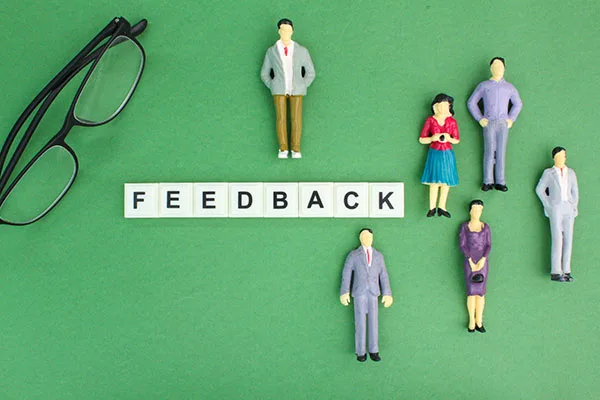
Child Development: Inviting good and bad feedback from your team on a regular basis creates a logically safe climate where people feel comfortable and heard.
One new initiative that I have launched here at CDI that has, it’s meant to empower not my immediate Rockport with the Inspire organization, it’s a continuing improvement committee that we have launched here where any staff member in any role in the organization and bring forward an idea for a process or system booth, then that is reviewed by a group of many management and management and then they meet with the staff member group brothel idea forward to talk about their proposed idea and to have it out together.
What’s the problem that our colleague is trying to solve, and then what might be the impact of that idea? For example, might it have an unforeseen consequence or another team that we need to think about? Are there some logistical pieces around finding a budget that we have to troubleshoot together? We then bring in our senior leadership team to consult at our level to say, “How does this fit within the strata plan, the vision potentially,” and then all of us meet again.
A representative of the senior team, the continuous improvement, and the employee who brought over the idea said, “Can we green light this and do this now? Are there a few tweaks we need to make and do it two months from now? If this idea doesn’t quite fit because of something like an unforeseen consequence for another team, how can we still solve the problem? That way employees aren’t sending their feedback out into the ether and hearing no without a why that’s important to them, attending that there’s always a dialogue and that people feel like they can be heard and contribute to thought they move.
Is there an example, a lesson, or an a-ha moment that’s come out of those conversations or a big change that you’ve made?
We have realized there are ways to in our service coordination and will grow internally. Even when we do have mechanisms and processes for helping to ensure that a client has a seamless experience in terms of being brought, and offered from one service to another within CDI. If they have a specialized need or if they need, for example, maybe to begin receiving support from our childcare consultation team and then perhaps get another therapeutic intervention from our clinical services team, even though we technically have those processes in place, they weren’t that well understood within the organization before.
One of our frontline staff came to us and said, “I have an idea to make sure that we are all up to speed on this and that we can collaborate better in real-time in the best interest of the clients.” There are ways we can maybe shorten this process, make sure everyone’s aware of the process, to begin with, and remove bottlenecks for both the clients and the staff.
Always aim to shorten the process in your organization. Make sure everyone is aware of the process and remove bottlenecks for both your staff and clients. Share on XAs a management team, we weren’t close enough to the ground to see where the bottlenecks were happening. We weren’t even aware this was an issue, but I’m so grateful that through creating this process we are more informed from our frontline staff around what the real issues are, and what are the sticky points for clients and staff. As a committee with the senior team and the staff, we put some practical next steps in place to improve both the client experience and the experience of our staff who are triaging and working.
How hard was it for you to resist slamming your hand on the table and saying, “See? That’s what I was talking about. That’s why we are doing this.” Did you take a victory lap?
I honestly can’t take credit for it because these are all the ideas of our team. I’m very happy though that we were able to introduce this as a mechanism and it’s built more excitement internally to see what other feedback loops and mechanisms we can put in place to foster more of this collaboration and by law.
You mentioned the work you were doing previously for CDI in the youth employment space, which is a startup organization that grew quite quickly and had a great impact. What from that startup culture have you been able to bring to a more established, clinically focused organization like CDI? How has that been a strength as you’ve come in as CEO?
While Intel Canada, my previous organization was certainly more of a startup, there was also a real cross-disciplinary richness of that organization. Even though we were smaller and younger, that certainly evolved in terms of what they mean for the complexity that we deal with here. Empower provides no-cost IT skills training and jobs to underserved job seekers.
While on the surface it sounds like there is a fundamental skill-to-employment program, there were additional dimensions to mental health models. For example, alongside the skills training and the job placement pieces, there was also social work and more wraparound support that we provided at Empower Canada because many of the job seekers primarily, to begin with, were young people from underserved communities who we supported, all who had significant mental health challenges, which is part of what inspired me to then make this shift in life, career support, child abuse, and mental health.
There was already an interdisciplinary dialogue between both of the Empowered teams who were IT professional instructors, job developers who did business development to place our candidates with corporate employers, and social workers who brought that clinical lens. That helped give me some context for some of the work that we do at CDI. Also as part of that model, once Empower places and graduates, they continue to form them for five years after that, which is unusual and gives space to have that length of time to continue providing alumni education, job retention, coaching, career advancement, and mentorship.
That long-term investment in the success of Empower Canada’s graduates also required a lot of interdisciplinary expertise and agility in the sense of continuing to pivot already because IT probably changed. We would have to switch up our curriculum sometimes multiple times a year in areas like data analytics and information already to stay relevant to what employers wanted. We were always equipping our participants, our program participants, with this changing set of industry skills. That ability to pivot to what we were seeing in the community in terms of a need, pivoting to what our data was telling us about what types of programming would most effectively serve our clients, those cases will follow me the most relevant for me in terms of helping me to then take the helm here.
That connection between the agility of a startup to a well-established organization, and the commitment to interdisciplinarity, it’s great to hear. A question I often ask leaders who’ve been in the chair for a little while, have settled in, maybe hung up a painting or something on the wall. What do you wish you knew then that you now know, that you’ve learned over the two years you’ve been in the chair? What would have been most helpful, either in terms of your perspective or a fact or a, “I didn’t know that about that sensitivity.” What do you wish you’d known at the beginning?
Importance Of Investing In Infrastructure And Shared Services
This is a bit of a perennial challenge, but something that has been an area further focused from the idea I wish I had been more aware of when I first started is the need to invest in infrastructure and services. Those pieces like finance, IT, HR, and non-qualifiable, especially service organizations, the types of organizations that I built my career with were so focused on direct programs and that’s what we are going to be funded to deliver as well, but that’s led to this artificial separation in my mind, in my view, between direct and indirect costs or the program costs versus the back office stuff. The back office stuff is what keeps our line from enabling us to look at these amazing circles and there’s such an underappreciation of that both within our sector and sometimes among leaders.
I have to put myself in that bucket because earlier in my career, even when I was drafting the budget, for example, I would weigh everything so heavily towards the program. Even the modest threshold we had to budget for administrative law. I wouldn’t use all of them, to the detriment of the organization because those are such investments.
When I first joined here at CDI, I wasn’t within that mindset. When we hear about the heightened need in our community, our first thought and our first instinct is how to grow the program. To make that possible, we have to have a strong foundation. To be able to grow that foundation, we need to diversify revenue sources to be able to secure the funding required to have robust business structures and services.
Part of what helped me reflect more on this has been working with our board to develop our new five-year strategic plan. At one point, it was emphasized by our then board chair as well that we can have the greatest aspirations and we encourage that around growing our reach and our impact, but without infrastructure as our foundation and investing in that, there’s no way we can do that sustainably.
In our new strategic plan, rather than having pillars, there’s this concentric model where we have our clients, our people, and our society as the green-focused areas around the circles. Our clients are strong by outcomes, supporting our community, our people finding an inclusive culture in CDI, and our society being systems change and leadership we are looking to integrate, but in the center of it is our infrastructure. Rather than it being the back office, it being the afterthought, how do we center this as what we need for the impact we sustain? That’s been a major realization over the past few years. That’s how important this piece is and not to diminish it by making it the administrative thing in the background, but bringing it to the core.
It’s that full-cost accounting. In order to deliver this program, we need all of these people doing all of this work to do it. It’s a learning journey for a lot of leaders as you say, particularly in service delivery organizations and social service organizations as well where the presence of scarcity is ever-present. It’s making do and getting by that compounded over many years and creates some fairly odd organizational structures in organizations that we have seen through our work. How did you have that conversation with your board? How did you bring your board along in that conversation to look at this is what it costs to mount the programs that CDI provides?
I would say the board taught me a lot to some extent.
Tell us that story.
Even in the interview process, part process was for me to deliver a presentation on what I would accomplish in my first six months as CEO. Even at that time, several board members were part of that process. I gave them that presentation and great ideas. You might think of it more internally if you are the successful candidate and there are some pieces around throwing up our systems, our foundation that we think may be important.
When I did become a successful candidate and started here, they were right. They have been very thoughtful about this. You mentioned the full cost accounting. We’re looking at building that into our modeling for our plans around scaling. What are the costs around recruiting the staff to deliver that program, the technology to collect the data needed for evaluation, or increasingly in our hybrid age to deliver programming as well? What are the costs around having a finance department reporting to funders that were required even when the funding was running flat? Our board helped open my eyes to a full range of thought. It’s been a good relationship that way. I have been able to bring some realization to that and from being closer to their ground and they have educated me on some historical and contextual pieces that were very helpful.
Measuring Impact And Demonstrating Value In The Mental Health Space
Working in the mental health space, we have a number of clients and organizations that we have had the chance to work with in the mental health space. Healthcare organizations are looking at we need to give something in mental health. Everybody wants to give to mental health. There’s this tremendous rush to fundraising. Donors are wanting and, in many ways, stepping up to meet that need, but there are so many organizations raising money for mental health for the first time or raising money for mental health in a prominent way for the first time. How do you distinguish CDI’s offering or the opportunity in your conversations with donors that don’t get blurred with all of the other very meaningful and successful programs that exist?
I would say that overall, I’m very encouraged to see the growth of the sector. There needs to be enough support for all of us to do our work. Also, I didn’t think that there were more opportunities to collaborate or to join forces, but I’m excited to help facilitate that. I also think that donors and funders want that. I’m happy that they recognize that it does take a village because each of us has our areas of strength. There could be more opportunities to do collaborative initiatives that have collective impacts. We’ll be working to support the whole trial. CDI does that in a multi-service. There could be more multi-agents for each of us to bring our skills that they are. What helps CDI position, our unique contribution in that space would be the rigor of our evaluation. That’s something that is an asset in that mental health as a sector could benefit from more evaluation.

Child Development: It is encouraging to see the growth of the mental health sector. There are more opportunities than ever to collaborate and join forces.
That’s very diplomatic of you. It would benefit from a little bit more.
I would say yes. That was eye-opening to go from employment services to this space because employment services are very measurable. It builds and trains me as well. Our candidate is very clear about how many of our participants are in industry certifications, how many large programs, what percentage has six-period employment, and what percentage maintains employment, very obviously measurable.
In mental growth, it’s not like there aren’t measures. There’s such a plethora of things you can measure and there isn’t necessarily that you are cut as director in the framework for measuring it. There are so many different phenomena within mental health. We can measure different levels of efficacy. It can be hard to cut through the noise or discern what is going to tell us that this program works.
How can we set benchmarks to be able to bring a case or support or a larger policy to the city makers that say, “Writ large, this is a sector worth investing.” One of the strengths that CDI brings, for example, through the MAP program that we offer is not only evaluating how we deliver SNAP through CDIs, but also through this broad network of affiliates that we have also developed, being able to collect the same APIs from them to then demonstrate collective impact, and that rich data has enabled us to do those more rigorous forms of evaluation. For example, randomized control trials and independent cost-benefit analyses done by external parties. We don’t have to take CDI’s word for it, but there is some validation that these programs work.
One example would be the cost-benefit now done by other regions showing that for every dollar invested in SNAP, there’s an average $32 societal return on investment. Being able to bring that concrete, tangible return to the table. Also, in terms of what is that value proposition for us around privilege. One encouraging piece I’m getting to hear from more policymakers is this language around upstream investment, which is a newer language for what we have often said in CDI, which is early intervention is the best prevention.
Early prevention is the best prevention. Share on XIf we intervene as early as possible, get a person’s life cycle, the greater dividend that’s going to have through that person’s life in terms of greater educational attainment, health determinants, risk factors, employment prospects, every aspect of a person, Building that in CDI, where we can add value largely is the measurement piece and also that upstream investment.
Looking Ahead: Growing Impact And Expanding Reach
It is so great to listen to you as the leader talk about being as open to learning and as genuinely curious as you are, but also with a strong conviction about how CDI does its work and how you measure that impact. That’s a good example for our audience to know, not just in the individual words you are using and the answers to the questions, but in your approach to breath of fresh air for the leadership in the sector. I appreciate you sharing that. I have one last question if you’ve got a couple more minutes. Andrew, what are you looking forward to?
It’s growing our impact in the next few years. While it can feel daunting, I’m more optimistic about the difference we will have. As you said earlier, CDI has claimed the number of children over the past years, just shy of 3,400 in ‘21 to more than 9,600 last year. We can do even more like. We are the North Star goal of the new strategic brand that we launched.
It’s improving the early learning and mental health platform of 50,000 children and youth. I believe that is possible. We may even exceed that goal because while there is great need, there’s also such passion and expertise not only within CDI but through our constellation of ally organizations. There are growing numbers of people who are committed, including our donors, our funders, our stakeholders, and in other sectors as well, including education. While the need is great, I also have optimism about what the future brings. I feel our team is well poised and eager to expand our reach and our impact to the greatest extent.
That’s an inspiring way to end our very interesting and in-depth conversation. Andrew, thank you so much for being a part of the show.
Thank you.
Important Links
About Andrew Reddin
 Chief Executive Officer with expertise in service excellence, change leadership and fund development. Collaborates with Board and staff to develop agile, measurable strategic plans that advance the organization’s vision and mission.
Chief Executive Officer with expertise in service excellence, change leadership and fund development. Collaborates with Board and staff to develop agile, measurable strategic plans that advance the organization’s vision and mission.
Strong track record of securing multi-million-dollar contributions from federal and provincial governments as well as corporate partners, foundations and private donors. Leads senior executive team and cross-functional divisions to achieve organizational KPIs, revenue goals and service excellence.
15+ years of progressively senior experience in the social impact sector. Committed to advancing inclusion, diversity, equity and accessibility (IDEA); proud member of the 2SLGBTQI+ community. Holds Executive MBA and pursues continuous learning.

